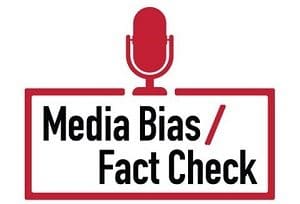LEFT BIAS
These media sources are moderately to strongly biased toward liberal causes through story selection and/or political affiliation. They may utilize strong loaded words (wording that attempts to influence an audience by using appeal to emotion or stereotypes), publish misleading reports and omit reporting of information that may damage liberal causes. Some sources in this category may be untrustworthy. See all Left Bias sources.
- Overall, we rate Electronic Intifada Left biased based on political editorial perspectives that favor a socialist perspective and strong pro-Palestinian and anti-Israeli bias. We also rate them Mixed for factual reporting due to a lack of transparency regarding funding, one-sided reporting, and a false claim.
Detailed Report
Bias Rating: LEFT
Factual Reporting: MIXED
Country: USA
MBFC’s Country Freedom Rating: MOSTLY FREE
Media Type: Website
Traffic/Popularity: Medium Traffic
MBFC Credibility Rating: MEDIUM CREDIBILITY
History
Founded in 2001, The Electronic Intifada (EI) is a Chicago-based publication founded by Ali Abunimah, Arjan El Fassed, Laurie King, and Nigel Parry. EI reports on current news regarding Palestine, primarily the Israeli occupation, and is pro-Palestinian in its reporting and editorial stance.
Read our profile on the United States government and media.
Funded by / Ownership
Electronic Intifada is a nonprofit organization that is funded through donations. However, EI does not publish financial information, reflecting a lack of transparency and accountability.
Analysis / Bias
Electronic Intifada is a news publication and educational resource focusing on Palestine, its people, politics, culture, and place in the world. However, at this time, the majority of content is related to the Israel-Hamas conflict.
The site exhibits a clear Pro-Palestinian bias in story selection and frequently employs emotionally charged language. Examples of such language include headlines like “Does Israel want to wipe Gaza off the map?” and “Biden’s white supremacy gives Israel carte blanche to commit genocide.” These examples demonstrate a tendency to use wording that could influence readers through appeal to emotion or stereotypes. Despite the biased presentation, articles are generally well-sourced to credible media outlets. However, we also found that they occasionally rely on poor sources like The Grayzone, Quds News, and Mondoweiss.
EI has been criticized as promoting extreme views and propaganda against Israel by the NGO Monitor. EI counters that the “NGO Monitor is an extreme right-wing group with close ties to the Israeli government, military, West Bank settlers, a man convicted of misleading the US Congress, and to notoriously Islamophobic individuals and organizations in the United States.”
Further, the ADL reports that Electronic Intifada founder Ali Abunimah spoke on an “emergency episode” of The Red Nation Podcast on October 9, during which he blamed Israel for the violence committed by Hamas.
Editorially, Electronic Intifada holds left-leaning political views with support for the Democratic Socialists Party of the USA: Supporter of Palestinian rights wins huge upset in New York election. In general, EI is reasonably factual in reporting; however, they have made false claims, sometimes relying on poor sources and focusing on one-sided reporting that may leave out important context.
Failed Fact Checks
Overall, we rate Electronic Intifada Left biased based on political editorial perspectives that favor a socialist perspective and strong pro-Palestinian and anti-Israeli bias. We also rate them Mixed for factual reporting due to a lack of transparency regarding funding, one-sided reporting, and a false claim. (D. Van Zandt 5/13/2016) (D. Kelley 5/8/2017) Updated (12/10/2023)
Source: https://electronicintifada.net/
Last Updated on April 1, 2024 by Media Bias Fact Check
Do you appreciate our work? Please consider one of the following ways to sustain us.
or
Left vs. Right Bias: How we rate the bias of media sources


